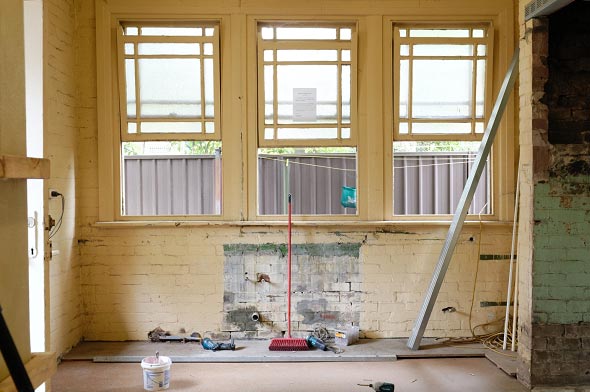Do's & Don'ts of Water Damage.
Do's & Don'ts of Water Damage.
Blog Article
Just how do you really feel about What You Can Do At Home To Prevent Fire And Water Damage?

Water offers life, water intrusion on components where it's not expected to be can result in damages. Houses with water damages smell stuffy and old.
Water can originate from many resources such as hurricanes, floodings, burst pipes, leaks, as well as sewage system issues. In case you experience water damages, it would certainly be good to know some safety precautions. Right here are a couple of standards on how to handle water damage.
Do Prioritize Home Insurance Coverage Protection
Water damages from flooding as a result of hefty winds is seasonal. You can additionally experience an unexpected flooding when a faulty pipeline instantly bursts right into your residence. It would be best to have home insurance that covers both acts of God such as all-natural disasters, and also emergencies like broken plumbing.
Don't Fail To Remember to Shut Off Utilities
In case of a disaster, specifically if you live in a flood-prone area, it would be suggested to turn off the main electrical circuit. This removes power to your entire home, protecting against electric shocks when water can be found in as it is a conductor. In addition, do not neglect to turn off the major water line shutoff. When floodwaters are high, furniture will certainly move and create damages. Having the main shutoff shut off prevents additional damage.
Do Keep Proactive and Heed Climate Informs
Storm floodings can be really unpredictable. If there is a background of flooding in your area, stay ready and positive. If you live near a creek, river, or lake, pay attention to discharge cautions. Obtain belongings from the ground floor and cellar, after that put them on the highest feasible degree. Doing so minimizes prospective building damages.
Do Not Overlook the Roof
Prior to the weather condition transforms frightful, ensure you have a roof inspection. In fact, it would certainly be prudent to obtain this solution yearly as it can minimize complicated concerns. You can stay clear of rainfall damage if there are no holes and leaks in your roofing system. Your contractor will also look after damaged gutters or any other signs of weakening. This will prevent water from flowing down your wall surfaces and also saturating your ceiling.
Do Take Notice Of Little Leaks
A burst pipe doesn't occur over night. You might notice bubbling paint, peeling wallpaper, water streaks, water spots, or leaking noises behind the walls. Have your plumbing repaired prior to it results in enormous damage.
Don't Panic in Case of a Burst Pipe
Keeping your presence of mind is vital in a time of situation. Worrying will just intensify the issue because it will suppress you from acting quickly. When it involves water damages, timing is essential. The longer you wait, the more damages you can anticipate. Thus, if a pipeline bursts in your house, promptly turned off your main water valve to cut off the source. Disconnect all electrical outlets in the location or transform off the circuit breaker for that component of the residence. Call a credible water damages reconstruction expert for help.
Water gives life, water intrusion on parts where it's not intended to be can result in damage. Houses with water damage smell old and also musty.
Water damages from flood charges to heavy winds is seasonal. You may discover gurgling paint, peeling wallpaper, water streaks, water discolorations, or dripping noises behind the walls. When it comes to water damage, timing is vital.
Some Do's & Don't When Dealing with a Water Damage
DO:
Make sure the water source has been eliminated. Contact a plumber if needed. Turn off circuit breakers supplying electricity to wet areas and unplug any electronics that are on wet carpet or surfaces Remove small furniture items Remove as much excess water as possible by mopping or blotting; Use WHITE towels to blot wet carpeting Wipe water from wooden furniture after removing anything on it Remove and prop up wet upholstery cushions for even drying (check for any bleeding) Pin up curtains or furniture skirts if needed Place aluminum foil, saucers or wood blocks between furniture legs and wet carpet Turn on air conditioning for maximum drying in winter and open windows in the summer Open any drawers and cabinets affected for complete drying but do not force them open Remove any valuable art objects or paintings to a safe, dry place Open any suitcases or luggage that may have been affected to dry, preferably in sunlight Hang any fur or leather goods to dry at room temperature Punch small holes in sagging ceilings to relieve trapped water (don't forget to place pans beneath!); however, if the ceiling is sagging extremely low, stay out of the room and we'll take care of it DO NOT:
Leave wet fabrics in place; dry them as soon as possible Leave books, magazines or any other colored items on wet carpets or floor Use your household vacuum to remove water Use TV's or other electronics/appliances while standing on wet carpets or floors; especially not on wet concrete floors Turn on ceiling fixtures if the ceiling is wet Turn your heat up, unless instructed otherwise

I came across that piece of writing on Preventing Fires and Water Damage In Your Home while doing a search on the internet. Make sure you take a moment to promote this content if you enjoyed reading it. Thank you so much for your time spent reading it.
Report this page